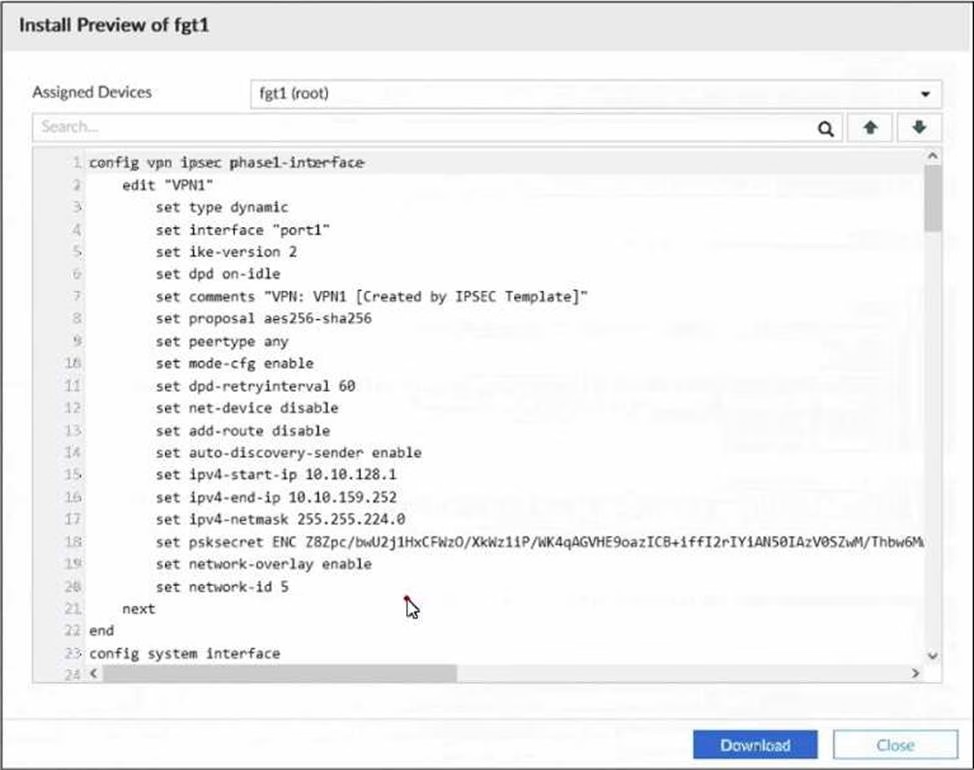In the exhibit, which statement best describes the configuration applied to the FortiGate device?
Refer to the exhibit.

An administrator used the SD-WAN overlay template to prepare an IPsec configuration for a hub-and-spoke SD-WAN topology. The exhibit shows the installation preview for one FortiGate device.
In the exhibit, which statement best describes the configuration applied to the FortiGate device?
A . It is a hub device. It can send ADVPN shortcut offers.
B . It is a spoke device that establishes dynamic IPsec tunnels to the hub. The subnet range is 10.10.128.0/23.
C . It is a spoke device that establishes dynamic IPsec tunnels to the hub. It can send ADVPN shortcut requests.
D . It is a hub device and will automatically discover the spoke devices that are in the SD-WAN topology.
Answer: C
Explanation:
According to the SD-WAN 7.2 Study Guide, the SD-WAN overlay template simplifies the configuration of IPsec tunnels in a hub-and-spoke topology.
The template defines the following parameters:
type: dynamic for spokes, static for hubs
interface: the WAN interface to use for the IPsec tunnel
network-overlay: enable for spokes, disable for hubs
network-id: a unique identifier for each spoke
auto-discovery-sender: enable for hubs, disable for spokes
auto-discovery-receiver: enable for spokes, disable for hubs
Based on the exhibit, the FortiGate device has the following configuration:
type: dynamic
interface: port1
network-overlay: enable
network-id: 5
auto-discovery-sender: disable
auto-discovery-receiver: enable
Therefore, the FortiGate device is a spoke that establishes dynamic IPsec tunnels to the hub. It also has the network-overlay and auto-discovery-receiver options enabled, which means it can send ADVPN shortcut requests to other spokes when it receives a shortcut offer from the hub
Latest NSE7_SDW-7.2 Dumps Valid Version with 70 Q&As
Latest And Valid Q&A | Instant Download | Once Fail, Full Refund

